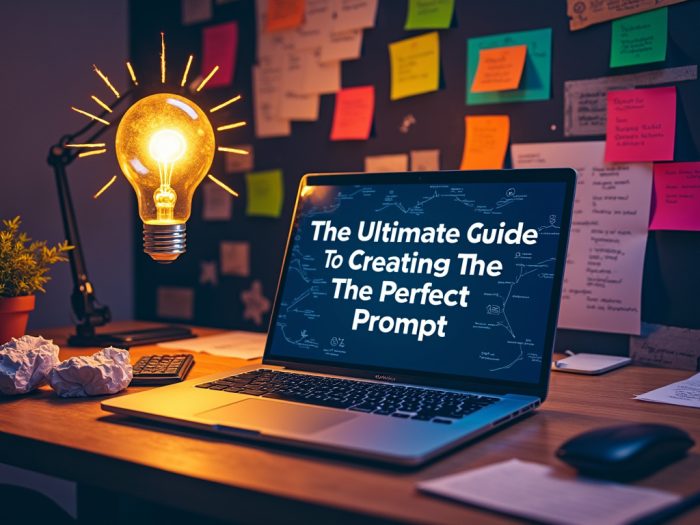
The Ultimate Guide To Creating The Perfect Prompt
I’ve been searching for an easy and reusable way to create a prompt for a few months and at some point it hit me: the output will only be as good as the input.
Asking the right question will get you the right answer.
A fun way (please humor me here) to better understand how the correct input will affect the answer is to analyze what Deep Thought answered to a “race of hyper-intelligent pan-dimensional beings” that built this AI super computer many million years ago.
Here is the first ever created prompt given to “Deep Thought”:
“What is the answer to the ultimate question, of life, the universe and everything”.
And Deep Thought answered “42”.
Here comes the important part of the dialogue:
“You have to know what the question actually is in order to know what the answer means”.
Crafting the Perfect Prompt
This brings us to the crux of prompt engineering: clarity and specificity.
Here are some steps to help you craft prompts that yield the most useful and accurate responses:
- Define Your Objective: Before you even start typing, know what you want to achieve. Are you looking for information, an opinion, a creative piece, or a solution to a problem?
- Be Specific: The more specific your prompt, the less room there is for misinterpretation. Instead of asking, “Tell me about space,” you might ask, “Explain the current theories on dark matter in the universe.”
- Contextualize: Provide enough context to guide the AI. If you’re asking about a historical event, mention the period or key figures involved.
- Use Clear Language: Avoid ambiguity. If you need a step-by-step guide, say so explicitly.
- Set Boundaries: If you want a concise answer, specify the length or depth you’re looking for, like “In 200 words or less, summarize…”
- Ask for Examples or Analogies: If the topic is complex, asking for real-world examples or analogies can make the information more digestible.
- Incorporate Constraints: Sometimes, adding constraints can lead to more creative or focused responses. For instance, “Explain quantum physics to a 5-year-old.”
- Iterate and Refine: Don’t be afraid to tweak your prompt if the initial response isn’t what you expected. Each iteration can bring you closer to the perfect prompt.
Examples of Basic Well-Crafted Prompts
- For Information: “List the top five technological advancements in renewable energy in the last decade, with brief descriptions of each.”
- For Creativity: “Write a short story set in a world where everyone can read minds, focusing on the challenges of privacy.”
- For Problem Solving: “If you were to design a city for 1 million people with sustainability in mind, what would be your top three priorities and why?”
Conclusion
Prompt engineering is both an art and a science.
It’s about understanding the capabilities of the AI you’re interacting with and tailoring your requests to maximize those capabilities.
Remember, like the pan-galactic beings who learned from Deep Thought, the key to unlocking profound answers lies in asking the right question.
With practice, you’ll find that crafting the perfect prompt becomes second nature, leading to more insightful, useful, and perhaps even entertaining interactions with AI.